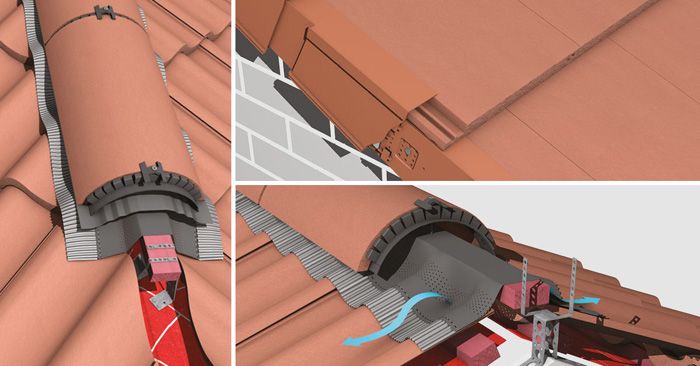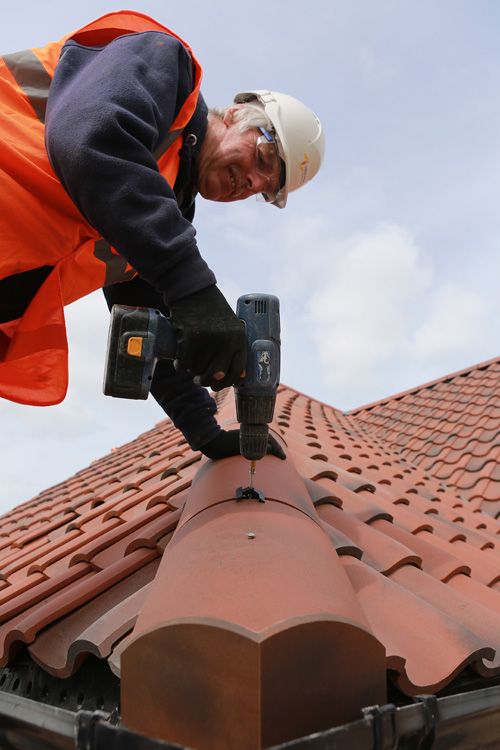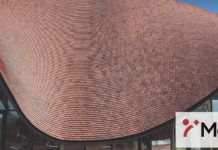

The roofing industry has been talking about the prospect of a new dry fix standard for a few years now, and at the end of January, BS 8612: Dry-fixed Ridge, Hip and Verge Systems for Slating and Tiling, was finally launched.
Why do we need BS 8612 and what products does it cover?
Since major revisions to BS 5534 were made in 2014, removing any contribution from bedding mortar to resist wind uplift, there has been a clear shift towards the use of dry fix systems. However, the popularity of the products means that there has been a huge increase in the quantity of systems on the market, with many offered at a much cheaper price and claiming to do more or less the same job.
While they may look broadly similar, the quality and performance of the components used can vary significantly, with some systems value-engineered to bring the cost down.
Inconsistencies in durability and weather resistance have even led to some reported product failures, such as ridge tiles not being fixed securely enough and ridge rolls not adhering to the top course of roof tiles properly. Additional problems have been reported of severe staining to gable ends of buildings, with water not draining away from walls due to poorly designed verge units.
Such was the concern about this that the British Standards Institute, in consultation with manufacturers and organisations like the National House-Building Council, developed the new dry fix standard, BS 8612.
BS 8612 covers dry fixed ridge and hip systems connected to timber ridge / hip battens, ridge boards or hip rafters and dry-fixed verge systems, which are installed with slating and tiling.

How will it affect roofing contractors and manufacturers?
Whilst BS 8612 won’t have anywhere near as much impact on roofing contractors as recent revisions to BS 5534 did, it is still very significant because it sets minimum quality standards for dry fix systems for the first time. This means that it should make it much easier for roofers to differentiate between the products on the market, and should hopefully reduce the amount of inferior systems available.
It is manufacturers who will feel the biggest impact from the new standard because the onus is on them to make sure their systems meet the strict requirements. BS 8612 defines the performance criteria that dry fix systems should meet, including durability, mechanical fixing and weather resistance. It also outlines the tests that manufacturers must put their products through in order to prove compliance. These include tensile strength and adhesion tests for ridge roll products, as well as mechanical resistance tests for ridge, hip and verge systems.
We welcome the introduction of BS 8612 because it is another positive step forward for the quality and security of pitched roofing in the UK. Having specific test methods and requirements to assess all products on an equal basis leaves little room to hide. We are pleased to be able to demonstrate the quality and durability of the components used in our systems through this process. Indeed, at Marley Eternit, we have already put our dry fix products through rigorous testing to ensure they meet or exceed the expectations of the new BS 8612 standard.
 What do roofing contractors need to do?
What do roofing contractors need to do?
Contractors can have the peace of mind that established manufacturers like Marley Eternit have already been preparing for the new standard. However, there are some actions that roofing contractors will need to take themselves as well:
1. You will need to make sure that any dry fix systems you use that require BS 8612 compliance, meet the requirements or have BBA certification.
2. Under the new standard, dry verge products can no longer be installed just with a nail fixing into the end grain of the batten. Instead, mechanical engagement must be on the faces of the batten. In anticipation of this change, Marley Eternit has developed a new batten end clip, to help users ensure that the dry verge is fixed securely into the end of the batten. The new clip requires no nails and has sharp teeth which grip firmly onto the batten, making it extremely secure, as well as being very quick to push or hammer into place.
3. Don’t wait until the end of the transition period. Switch over to BS 8612 compliant products as soon as possible, and make sure you update your buying policies.
4. Be aware that BS 8612 only sets minimum performance requirements. This means there will still be quality differences between compliant products, so watch out for this when choosing a system as some will still be superior to others.
5. If you have any queries, you can contact Marley Eternit’s technical team on 01283 722588, or visit the website below for advice.



